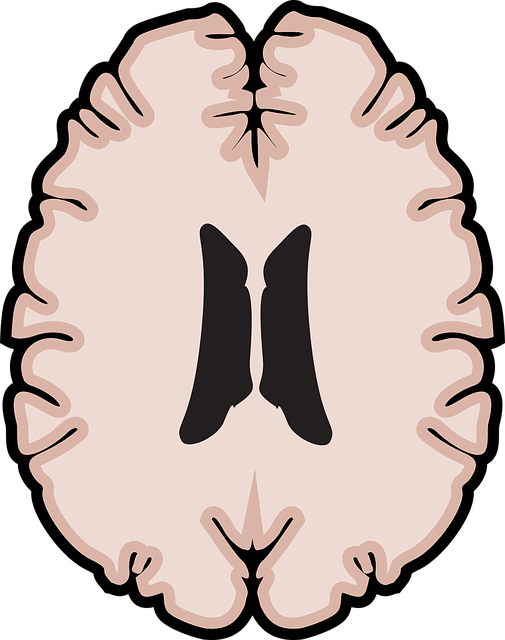Parker Spanish Speaking Therapy prioritizes inclusive mental health services by understanding cultural barriers within their diverse communities. They implement tailored strategies like stress reduction workshops, Spanish-language journaling, and stigma campaigns to enhance engagement. Through strategic staffing, location choices, and open dialogue spaces, they foster trust and promote mental well-being. Continuous evaluation ensures programs remain impactful, addressing specific community needs through adaptive practices, ultimately leading to a healthier Parker.
Community outreach programs play a pivotal role in expanding access to vital services like Parker Spanish Speaking Therapy. This article delves into the comprehensive process of implementing such initiatives, from identifying target demographics within the community to designing engaging strategies that bridge cultural and linguistic gaps. We explore essential logistics, including staffing, location, and accessibility considerations, while emphasizing the importance of measurable outcomes and long-term community engagement for sustainable success in Parker Spanish Speaking Therapy programs.
- Understanding Community Needs: Identifying Target Demographics for Parker Spanish Speaking Therapy Programs
- Designing Effective Outreach Strategies: Engaging and Educating the Community
- Implementing Program Logistics: Staffing, Location, and Accessibility Considerations
- Measuring Impact and Success: Evaluating Outcomes and Sustaining Long-Term Engagement
Understanding Community Needs: Identifying Target Demographics for Parker Spanish Speaking Therapy Programs

Understanding the unique needs of the community is a crucial step in implementing successful Parker Spanish Speaking Therapy programs. By identifying specific demographics within the area, therapists can tailor their services to address cultural and linguistic barriers that may hinder access to mental health care. This involves recognizing the diverse populations living in Parker, including Spanish-speaking individuals from various ethnic backgrounds, who may face unique challenges related to language, culture, and socioeconomic status.
Targeted outreach initiatives can be designed to engage these demographics effectively. For instance, promoting stress reduction methods suitable for cultural contexts could foster community trust. Similarly, providing Mental Wellness Journaling Exercise Guidance in Spanish can make therapeutic practices more accessible and appealing to Spanish-speaking residents. Additionally, incorporating Mental Illness Stigma Reduction Efforts into the community engagement strategy will help foster a supportive environment where individuals feel comfortable seeking help for their mental health concerns.
Designing Effective Outreach Strategies: Engaging and Educating the Community

Designing effective outreach strategies is key to engaging and educating communities, especially when focusing on a specific demographic like Spanish-speaking individuals through initiatives such as Parker Spanish Speaking Therapy. Tailoring programs to meet the unique needs and cultural nuances of these communities requires sensitivity and creativity. One powerful approach involves hosting educational workshops that address both mental health awareness and self-care practices, ensuring accessible language and inclusive environments.
These strategies can foster inner strength development by providing platforms for open dialogue, sharing valuable resources, and offering practical tools tailored to the community’s challenges. By integrating risk management planning for mental health professionals into these outreach efforts, service providers can create a supportive atmosphere, build trust, and encourage individuals to prioritize their well-being, ultimately leading to better mental health outcomes within the community.
Implementing Program Logistics: Staffing, Location, and Accessibility Considerations

Implementing a successful community outreach program requires careful consideration of logistics to ensure maximum impact and accessibility. At Parker Spanish Speaking Therapy, we recognize that reaching diverse communities demands tailored approaches. Staffing is a crucial aspect; hiring bilingual professionals who understand cultural nuances and can effectively communicate with the target demographic is essential. This ensures comfort and trust among participants, fostering open dialogue about sensitive topics like mental health and emotional healing processes.
Location selection plays a vital role in community outreach. Choosing accessible sites, such as community centers or local libraries, enables easy access for all, including those with limited mobility. Given that our programs often focus on stress management and mood regulation techniques, providing a safe and welcoming environment is key to encouraging attendance and engagement. By considering these factors, Parker Spanish Speaking Therapy aims to offer inclusive services that cater to the unique needs of diverse communities, promoting emotional healing processes through effective outreach strategies.
Measuring Impact and Success: Evaluating Outcomes and Sustaining Long-Term Engagement

Measuring the impact and success of community outreach programs is a crucial step in ensuring their long-term effectiveness and sustainability. At Parker Spanish Speaking Therapy, we believe that evaluating outcomes is not just about quantitative data but also qualitatively understanding the change brought about in the lives of individuals and communities. By collecting feedback from participants, family members, and community leaders, we gain valuable insights into the program’s reach and its impact on mental health awareness and stigma reduction efforts.
This holistic approach enables us to adapt our strategies and tailor interventions to address specific needs. Through ongoing assessment, we can identify areas for improvement and reinforce successful initiatives. For instance, integrating conflict resolution techniques has shown promising results in fostering better communication and understanding within diverse communities, leading to more harmonious relationships and improved mental well-being. Sustaining long-term engagement requires continuous evaluation, ensuring that the programs remain relevant, accessible, and impactful, ultimately contributing to a healthier and more connected community.
Community outreach programs for Parker Spanish Speaking Therapy are a game-changer in addressing language barriers and enhancing accessibility. By understanding community needs, designing engaging strategies, and implementing well-structured logistics, these programs can foster long-term success. Measuring their impact is crucial to identifying areas for improvement and ensuring the continued relevance of Parker Spanish Speaking Therapy services within the community. This holistic approach empowers the program to navigate a labyrinthine landscape, reach underserved populations, and create indelible positive changes.














